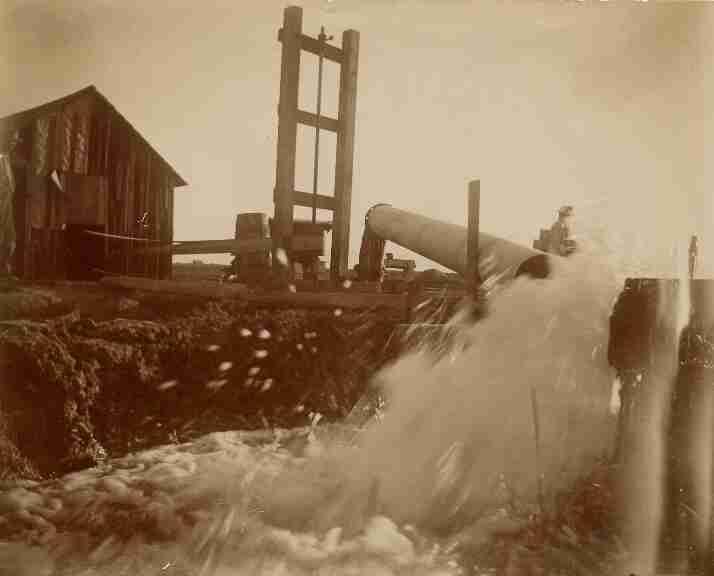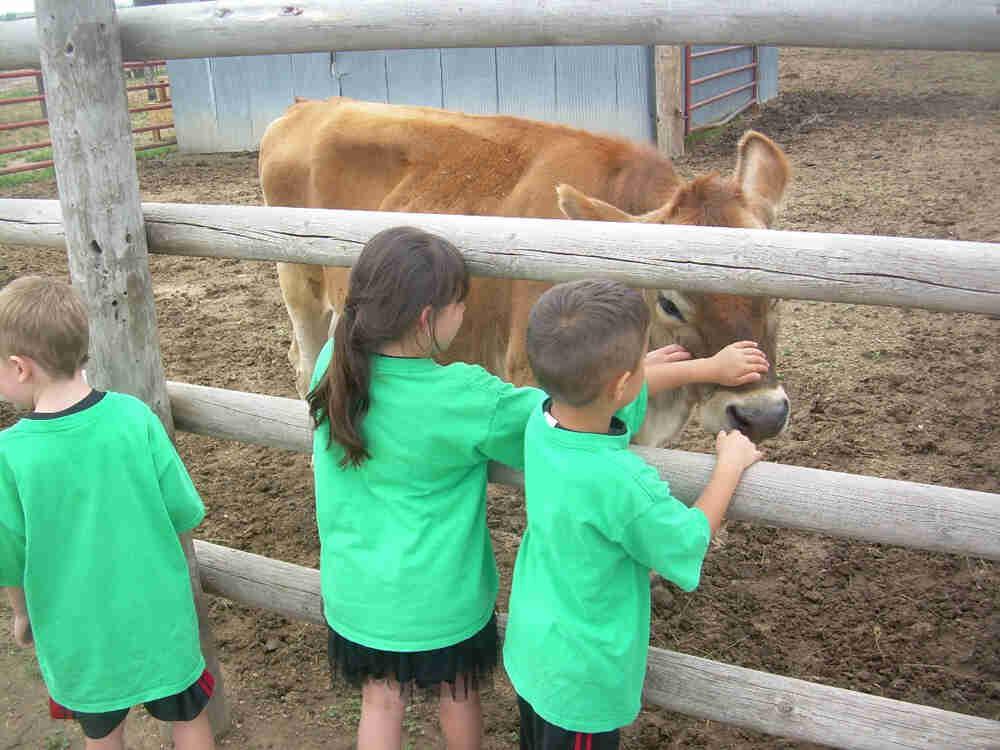The Bee Family Farm
Full Article
The Bee Family Farm is a historic farm located between Fort Collins and Wellington. In operation as a working farm since 1894, it is now an outdoor museum that preserves and displays the family’s historic artifacts, buildings, and fields to help visitors experience the history of farming in Northern Colorado.
As urban growth continues along the Front Range, city and county planners aim to provide open space and buffers between growing communities. The area’s farm families must adapt to these new conditions in order to survive. But adapting to change has been a constant theme for many of these families, whose ancestors homesteaded this land. The story of the Bee Family reflects the Anglo-American western migration and settlement of Colorado, as each generation has had to adapt to new economic conditions and develop new ways of managing the use of water and land. The history of irrigation, the sugar beet industry, and livestock raising can all be traced through the history of the Bee Family Farm.
Family Origins
John Bee came to America with his family when he was nine years old in 1853. The family settled in Upper Sandusky, Ohio. At seventeen he went to Mills County, Iowa, and lived with one of five uncles who had settled there. He farmed and taught school in the winter, and in 1868 he married Fanny Cotton. John suffered from asthma, so in 1882 he moved his family to the dry climate of Colorado. The dry climate helped his health but made farming difficult. After developing his homestead for five years, he rented an irrigated farm north of Fort Collins and moved there. In the meantime, Fanny’s sister Lizzie and her husband, Al Morse, moved to the Fort Collins area. Morse raised horses and hired out to help build many of the irrigation canals and reservoirs in the area. In the beginning, several of the irrigation companies went bankrupt, causing economic hardships for their workers. The Morse family sold its homestead and was able to buy the present 160-acre Bee Farm in 1894, but hardship continued. Al Morse and the couple’s only child, Whitwill, passed away by 1899.
Growth
John and Fanny’s son Arleigh took over the farm for his Aunt Lizzie. In 1902 John and Fanny sold their homestead to the North Poudre Irrigation Company to be used as a reservoir site, and moved their home to Lizzie’s farm. Irrigation water finally arrived at the farm in 1905, making it possible to raise other crops besides small grains and grass hay.
By 1903 Fort Collins had joined Loveland and Greeley in building a sugar beet refining plant. The Great Western Sugar Company had constructed railroads and built factories and with the irrigation system in place, the sugar beet industry was ready to grow. The Bees planted their first crop in 1905 and continued growing beets for most of the next 100 years. The cultivation of sugar beets was very labor intensive, as the crop had to be thinned, hoed, and harvested by hand. At various times German Russian families, Mexican migrants, and, during World War II, German prisoners of war, all worked on the farm. The sugar beets provided a degree of stability for the farm economy.
Arleigh continued to use horses for the farmwork and raised sheep during the 1920s and 1930s. The sheep ate sugar beet leaves and beet pulp, a by-product of the refining process. Most farms in the area fed 1,000 to 4,000 head of sheep each winter, which gave the Fort Collins area the title of “Lamb Feeding Capital of the World.” The Colorado Agricultural College (today Colorado State University) chose the ram as its mascot, and Fort Collins High School became the Lambkins. The Bee Farm raised sheep until World War II, when synthetic fabrics came into use.
Even with the reservoirs, irrigation water was not very reliable, so in 1910 Arleigh dug a well to supplement the ditch water. It was all dug by hand and lined with brick. The dry years of the 1930s increased the need for more dependable water, so the Colorado–Big Thompson Project was approved by Congress and was completed in the early 1950s. This gave Northern Colorado farmers a greater assurance that they would have the water they needed for their crops. It also assured a dependable domestic water source.
Arleigh’s son Francis graduated from the Colorado Agricultural College in 1939 and started farming with his father. He married Sylvia Saue in 1942, and they had seven children. Francis continued to irrigate with dirt ditches and furrow irrigation. He also saw many advances in farm technology. Before two of Francis’s sons joined the farming operation in 1971, concrete ditches with siphon tubes were put in to make the water use much more efficient. The farm transitioned to a center pivot sprinkler in 1997, becoming even more water efficient.
Preserving Agricultural History
As more land is developed and people continue to migrate to Colorado, the state has placed more emphasis on the preservation of agricultural history. In 1986, for example, Governor Dick Lamm and the state Department of Agriculture partnered with the Colorado Historical Society (now History Colorado) to create the Centennial Farm program, which helps to recognize and preserve historic farms and ranches. In 1994 the Colorado Department of Agriculture and the State Historical Fund awarded the Bee Family Farm the Centennial Farm Award for 100 years of family ownership. The farm was also placed on the National Registry of Historic Places in 2002.
As regional land prices increased and the demand for water shifted from agricultural to domestic, the family decided to cease farming. It sold 140 acres of the farm to Colorado State University for the Agriculture Research Development and Education Center. A conservation easement with Larimer County and the City of Fort Collins was granted in November of 2003. The easement will create a buffer between the town of Wellington and Fort Collins.
Because of the farm’s rich history and extensive collection of agricultural artifacts, the family retained ten acres and set up a nonprofit corporation to operate the Bee Family Centennial Farm Museum. The Farm Museum opened in 2008 and allows children and adults to visit the farm animals, view artifacts, and participate in activities centered around 1900s farm life. There are eight buildings with original furnishings or equipment, including the two-room homestead house, a home built in 1942, a garage, a milk barn, and a machine shed. Elementary school children enjoy activities such as grinding corn, milking a wooden cow, washing clothes on a scrub board, and throwing irrigation tubes. Visitors also turn out for the museum’s annual Vintage Base Ball Game in the spring and Pioneer Living Day in the fall. The mission of the museum is to teach visitors about the farming history of Northern Colorado in a traditional, engaging, and authentic way.





















